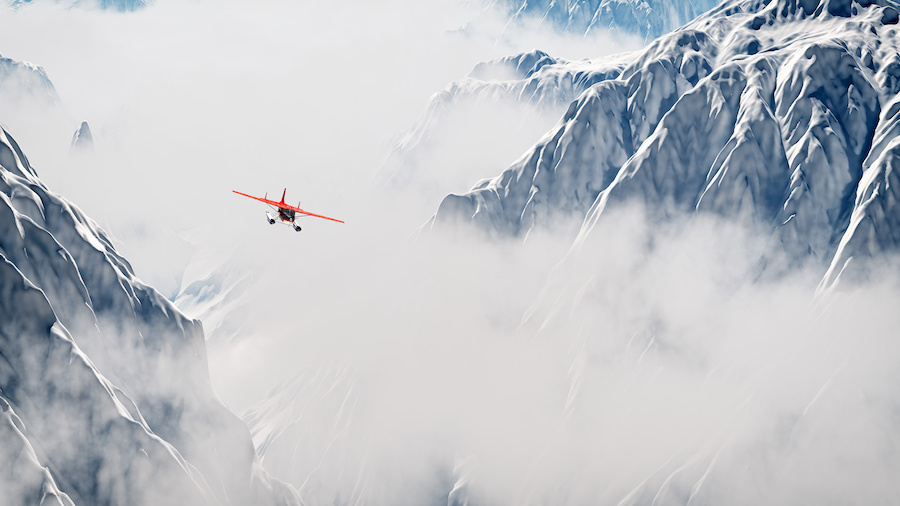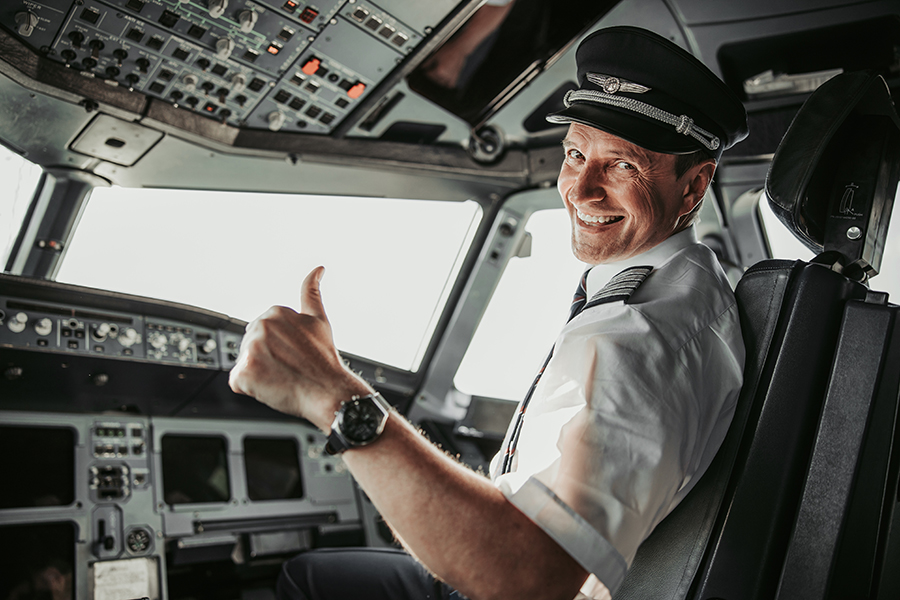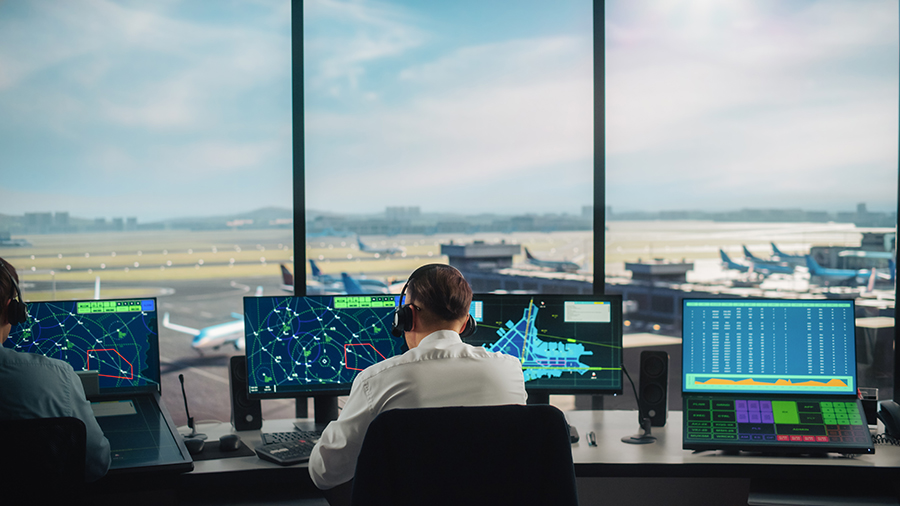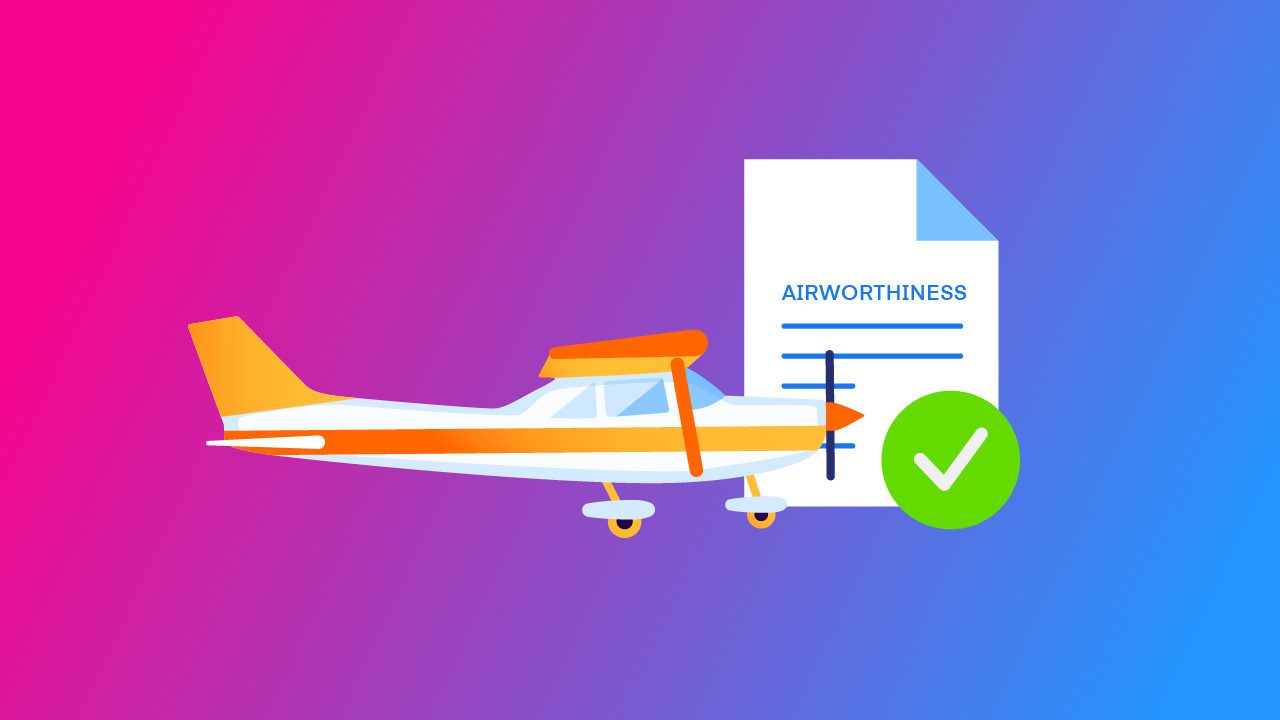Have you ever wondered how aircraft can fly in heavy snowfall? Does your heart miss a beat when you nearly slip on the snow when boarding the aircraft, only to take off minutes later? This article will explain some of the misconceptions surrounding aircraft operations in snow and how they manage to do it!
Where is Snow Found?
To understand if snow poses a real danger to aircraft, we first need to understand where it is found.
Clouds contain ice crystals; When these ice crystals merge, they become snowflakes. When these snowflakes become large enough, they fall to the ground, creating, you guessed it, snow.
While clouds can form at altitudes up to 60,000ft, the clouds associated with snow, such as nimbostratus, are only typically found below 10,000ft.
As typical commercial aircraft cruise well above this altitude (between 25,000 to 40,000 feet, depending on the aircraft type and weight, among other factors), it is unlikely that commercial aircraft will spend most of the flight flying in snowy conditions.
But what about the time spent below 10,000ft, during the takeoff and climb, or descent and landing?
Flying in the Snow
When it comes to precipitation, two primary factors affect an aircraft in flight:
1. Reduced visibility:
Precipitation reduces visibility, the extent of which is determined by the type and intensity of the precipitation. This effect is noticeable when driving in rain, snow, or fog.
A commercial aircraft can operate in zero visibility conditions but (with a few exceptions) cannot land or takeoff. The reduction in visibility below an acceptable standard is usually the reason why your flight is delayed or canceled due to snow, not the snow itself.
Unfortunately, the flight crew cannot do much to improve visibility when flying in the snow. Therefore, commercial aircraft are designed to operate in reduced visibility, and stations on the ground at an airport assist aircraft in approaching a runway without seeing it. However, these systems have limitations, and flight crews require at least some visibility to see the runway during landing or takeoff.
2. Icing:
Icing occurs when cold water droplets impact the surface of an aircraft and freeze onto that surface, causing an accumulation of ice. It is particularly hazardous when ice accumulates on surfaces such as the wing, as the ice will disturb the airflow across the wing, severely reducing lift.
As snow seems to be similar to ice, will snow therefore affect an aircraft in flight?
Because snow is already frozen (i.e., ice), it will not freeze and adhere to the surface of an aircraft during flight. Good news!
We’ve determined that the aircraft can fly in snowy conditions as long as there is sufficient visibility. But what about on the ground, before takeoff?
Taking off in the Snow
There is a situation in which snow does pose a hazard to the safety of the flight.
Just like your driveway in the winter, when an aircraft is on the ground in snowy conditions, the snow will accumulate wherever it falls. This buildup is a significant issue as the snow will affect the wing’s ability to produce lift (as mentioned earlier). The increased weight of the snow will also further reduce performance.
Unlike visibility, however, there is something we can do about snow accumulation on the aircraft.
Aircraft Anti-Icing and Deicing
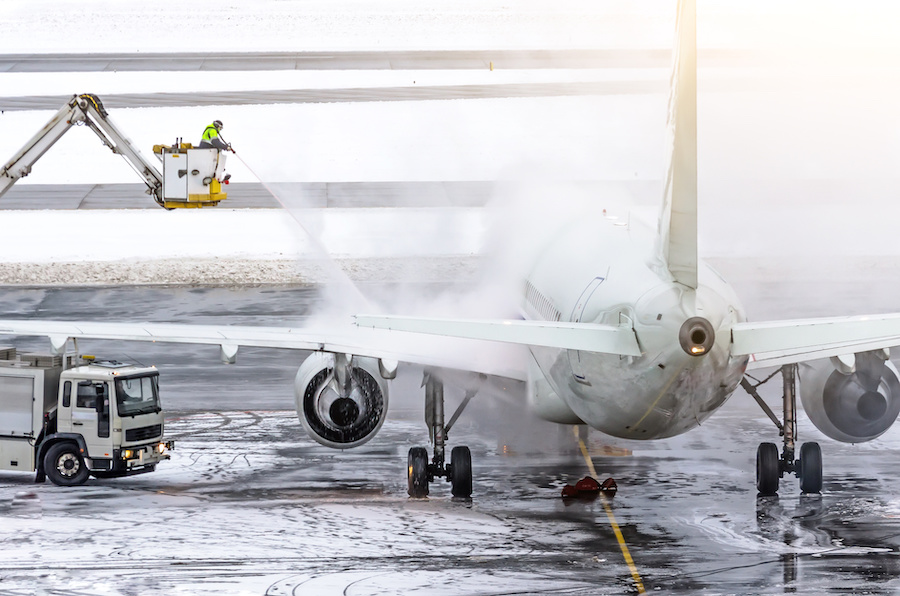
The solution to this problem is twofold: First, remove any accumulated ice, and second, prevent any significant ice accumulation before the aircraft departs.
The first step is done through a process known as deicing.
Deicing is typically accomplished by applying hot water or a hot mixture of water and deicing fluid. Although there are other approved methods for deicing—such as infrared heat or hot air—the primary method used worldwide is fluids.
Deicing fluid is a special kind of fluid made up of a glycol-water (antifreeze) solution, a thickener that assists the fluid in adhering to the aircraft, and a dye that aids the ground crew during application.
The second step is done through a process similar to deicing, known as anti-icing.
Anti-icing involves the application of fluids that prevent the accumulation of ice. Often the same fluid is used for both the deicing and anti-icing procedures.
The amount of time the anti-ice/deice fluid prevents ice and snow from adhering to an aircraft’s surface before a reapplication is required is known as the Holdover Time (HOT). Many things can affect the Holdover Time:
- An aircraft skin temperature below freezing.
- Wind or jet blasts that blow the fluid off of the aircraft.
- Heavy precipitation.
- Wet snow, which dilutes the deice/anti-ice fluid.
These factors can decrease the Holdover Time to the point where an aircraft returns before takeoff for a second anti-ice/deice procedure, further delaying the flight.
The Pilots and Their Aircraft

The flight crew also have to take special precautions before takeoff in snowy conditions.
Before proceeding with the flight, one of the pilots carefully inspects the aircraft’s exterior for any ice, snow, or frost that may negatively affect the aircraft during flight.
Flight crew also receive special cold-weather training designed to assist them when operating in snowy conditions, and they must pass special certification to do so.
When calculating the aircraft’s performance for takeoff and landing, specific calculations are made to ensure that the aircraft will remain within limits during snowy conditions.
The aircraft is also equipped with special equipment for operating in conditions where ice may form.
The aircraft uses an anti-skid system (similar to the one found in a car) to allow the pilots to maintain control in icy conditions. The aircraft also has various anti and deicing systems, such as heated panels on the wings.
This training and equipment ensure that the aircraft can safely operate in snowy conditions so that fewer flights are delayed or canceled.
Conclusion
Heavy snowfall may seem intimidating, especially when the drive to the airport felt like a feat in and of itself, but there is no need to worry.
Aircraft and the crew who operate them have been well trained and procedures put in place to allow you to travel to any winter wonderland you’d like!
